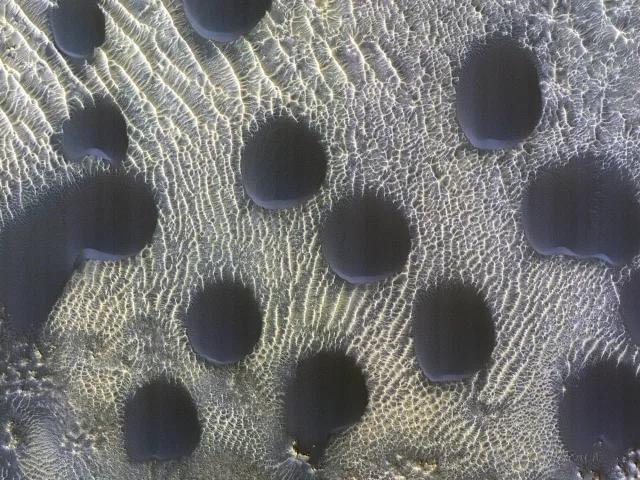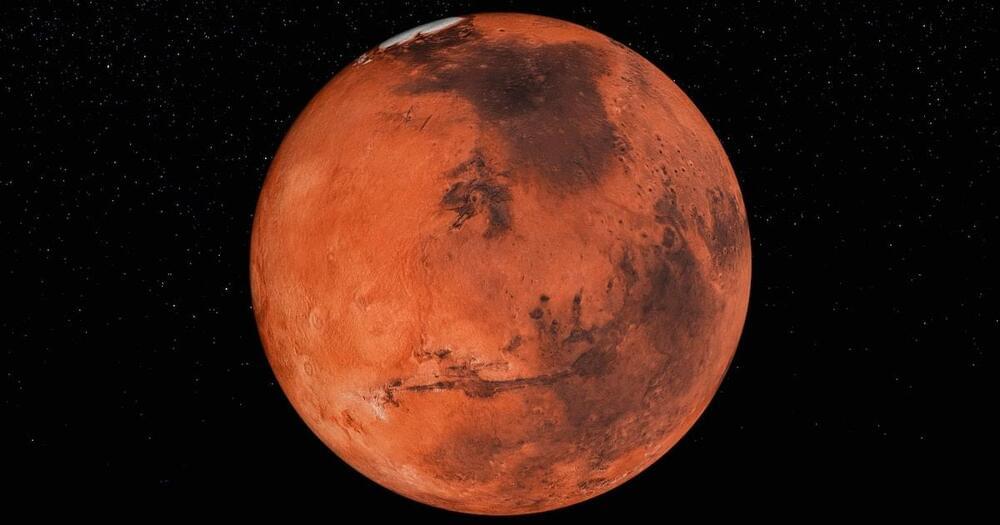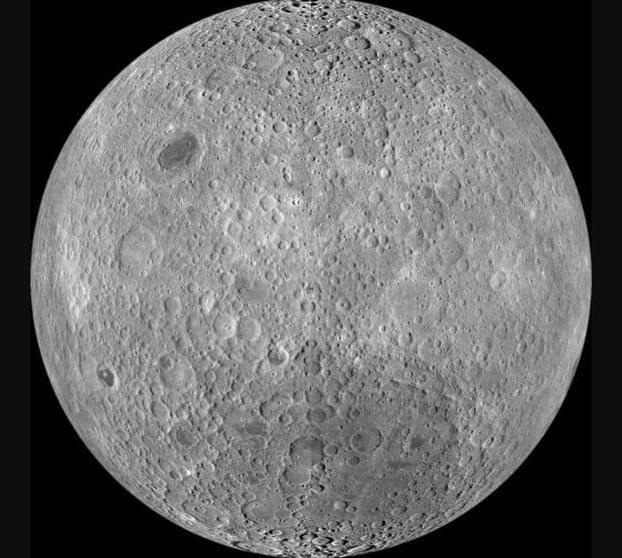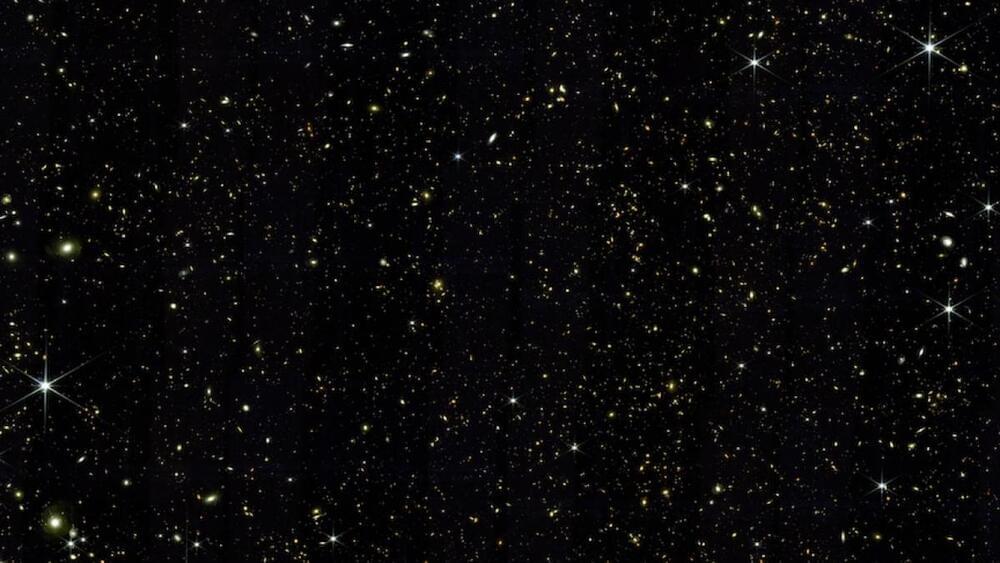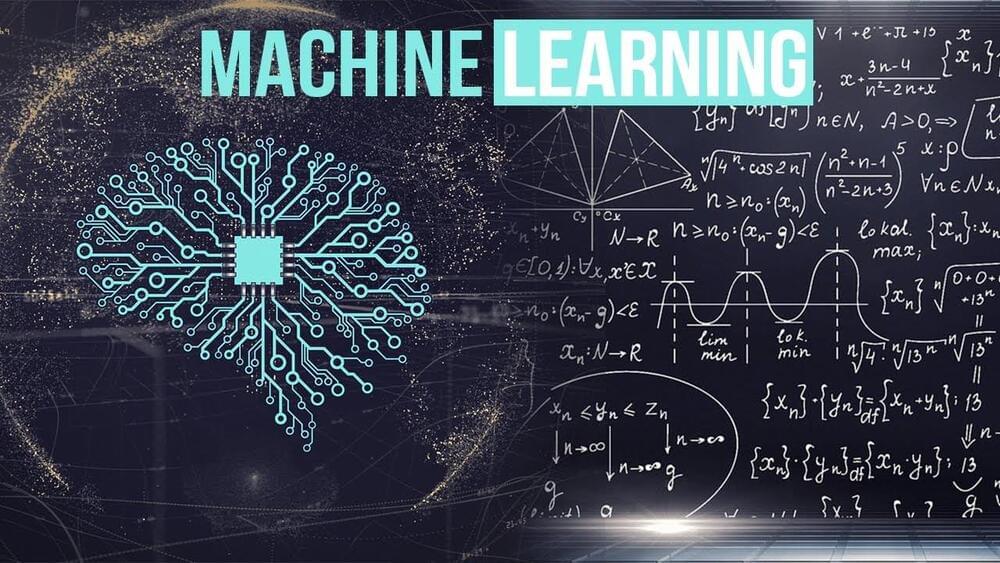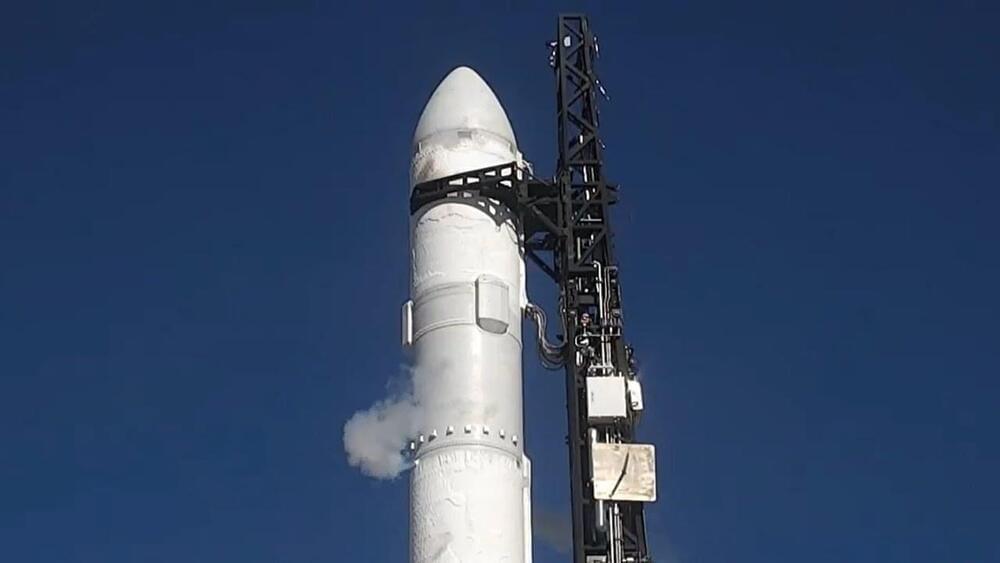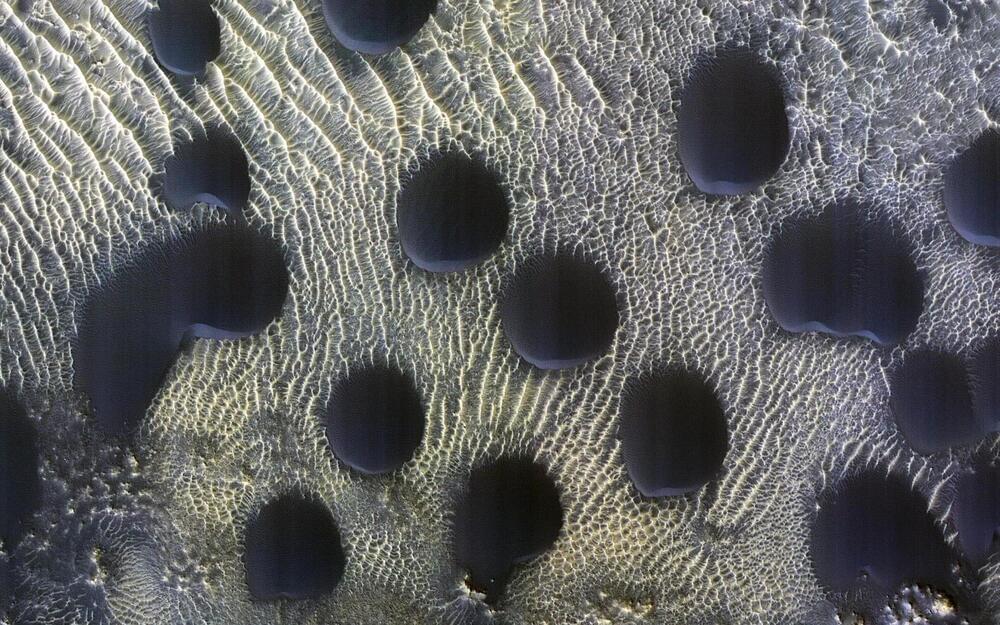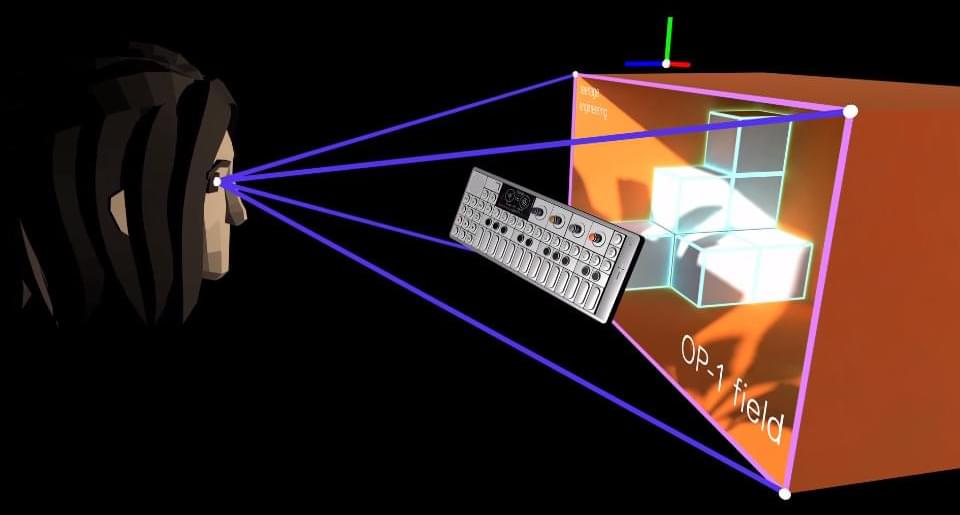Mar 14, 2023
NASA captures strange circular dunes on Mars in latest MRO image
Posted by Dan Breeden in category: space
Sand dunes are not uncommon on the surface of Mars. However, during observations to see how the frost from winter melts on the planet, the Mars Reconnaissance Orbiter captured images of strange Martian dunes that appear almost completely circular. This almost perfectly circular appearance is unusual, which has sparked the interest of NASA and astronomers worldwide.
According to NASA’s page detailing the image, the strange Martian dunes appear to have steeper sides on the south side. NASA says this is because the windows on Mars generally move towards the south. Of course, they can vary, but the effect is clearly seen in these images, where the southern side of the circular dunes is steeper.
The images of these strange Martian dunes were made possible thanks to the High Resolution Imaging Science Experiment (HiRISE), an instrument on the MRO. HiRISE is the largest and the most powerful camera that humanity has ever sent to another planet, and it has delivered exceptional observations about the surface of the Red Planet.
